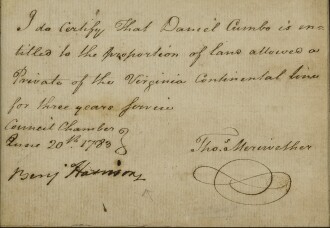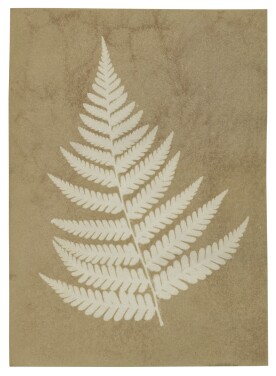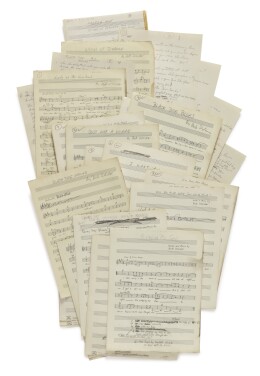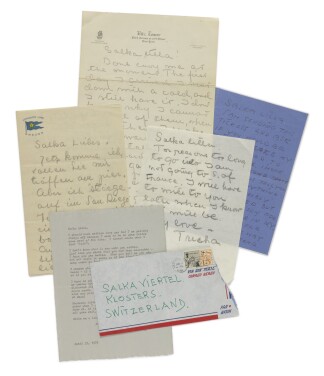N ew York’s summer auction of Fine Books and Manuscripts begins with a compelling selection of books, letters, archives, newspapers, broadsides, and other printed and manuscript artifacts from the Eric C. Caren Collection, illustrating “How History Unfolds on Paper.”
Other important properties in the sale include the autograph manuscript of a Sherlock Holmes story, “The Adventure of the Greek Interpreter,” by Sir Arthur Conan Doyle ($350,000 – 450,000), a 1794 signed indenture granting land for the use and benefit of the African Free School ($250,000 – 350,000), a letter signed by Adams, Franklin, and Jefferson establishing diplomatic relations with Sicily ($900,000 – 1,200,000), and other important items related to Americana, American and English Literature, and cultural history.

Eric C. Caren on a Life of Collecting
"After 55 years of collecting, and seven previous auctions of “How History Unfolds on Paper,” I am pleased to be working with Sotheby's on this eighth sale.
Before approaching Sotheby's, I took the material which follows, to PSA, a powerhouse in the world of collecting. PSA have been a significant factor for many years, in the areas of coins, baseball cards, autographs, comic books, etc. PSA evaluations help to solidify the connection between the objects and their origin. They represent the gold standard in the field of authenticating and grading of collectibles. I was then extremely pleased and proud to contract with Sotheby's for the sale of these wonderful historical documents! Sotheby's has been the single most famous auction house in the world since the 18th century! Whether they are handling fine art or rare books, including of course Americana, their name and reputation for excellence is without compare.
When I was a young collector, I was always in awe of this venerable auction house. I must admit that, when I attended my first Sotheby's sale some 40 years ago, I felt that I had no place in this rarefied world. It was extremely comforting to me that they treated a pauper (me) like they did a literal Prince. I learned from them and many other ladies and gentlemen, that it was all about "The Golden Rule" of human interaction.
Over the years, I learned from personal experience a somewhat well-known secret: somehow, Sotheby's works well for both consignor and buyer. How & Why? Because in every sale, there are items that bring spirited bidding, as well as many hidden gems, which can be purchased for quite conservative prices. I have never regretted my consignments or my buying from Sotheby's.
I am often asked why I am selling my cherished pieces. The answer is that, sadly, I learned that I would not live forever. That said, I am still actively collecting and expect that I will do so until at least the end of my life! Collecting allows for time travel back to primary source historical treasures. My "children" have been purchased by many acclaimed museums, libraries, dealers and collectors. Collecting is a wonderful addiction, which combines treasure hunting with education in a most splendid manner! I know that I never regretted a single purchase. I am quite sure that the winning bidders will be delighted, and that unlike all other addictions, the pleasure of ownership will last a long, long time. There is something eternal in living with history!"
Auction Highlights
The Founding Fathers
John Adams, Benjamin Franklin, and Thomas Jefferson Treaty
Letter signed by Adams, Franklin and Jefferson, as representatives of Congress, to the Envoy Extraordinary of the King of the two Sicilies, establishing diplomatic relations between Sicily and the United States, 22 September 1784.
Estimate $900,000 – 1,200,000


S otheby's is pleased to offer an autograph manuscript of a Sherlock Holmes story, “The Adventure of the Greek Interpreter,” by Sir Arthur Conan Doyle.
Sir Arthur Conan Doyle
Autograph Manuscript Signed ("Conan Doyle"), titled "The Adventure of the Greek Interpreter"
Estimate $350,000 – 450,000
In terms of its twists and turns, "The Adventure of the Greek Interpreter" is one of Holmes's more straightforward cases, which is almost certainly to do with the introduction of Mycroft, Sherlock's brilliant but comparatively sedentary brother. The tale is perhaps meant to caution against such "arm-chair detectives," as the narrative concludes with three dead men, and several unpunished murderers. Despite such seeming stylistic and thematic aberrations, "The Adventure of the Greek Interpreter" is a tour-de-force of deductive observation, offering a prime example of Doyle's genius, and underscoring the originality of his characters.
One of Doyle’s most enduring Sherlock tales, which introduces Mycroft Holmes and the Diogenes Club.

Of the 60 stories in Doyle’s Sherlock Holmes series, only about half of the original manuscripts survive. No collection or institution can boast of more than two that are complete, and only five libraries own more than one. Single manuscripts are held at Harvard, the Rosenbach Library, the British Museum, the Bibliotheca Bodmeriana Cologny Geneva and the Huntington Library. Manuscripts from the first three books in the canon—The Adventures of Sherlock Holmes (1892), The Memoirs of Sherlock Holmes (1894) and The Return of Sherlock Holmes (1905) are exceptionally rare and particularly desirable.

- Baker Street
Across Sir Arthur Conan Doyle's series, 221B Baker Street is the fictitious address of Sherlock Holmes's home and office.

- London Bridge Station
Holmes and Watson catch a train from here to Beckenham.
The Greek Interpreter

John Rennie’s 19th-century London Bridge. Transfer from the College of Architecture, Art and Planning. - Old Scotland Yard
Frequent mentions throughout the stories.

Street sign, Great Scotland Yard SW1 (Photo: R Sones) - Victoria Station

(Photo: Ewan Munro from London, UK) - Pall Mall
Mycroft Holmes lodges in the street.
The Greek Interpreter, p183.

- Whitehall
Mycroft Holmes walks here every morning from his residence in Pall Mall.
The Greek Interpreter, p183.

- St. James St

- Lower Brixton
J Davenport, who informs Holmes of Sophy Kratides's address, lives in lower Brixton.
The Greek Interpreter
- Clapham Junction
Mr Melas is instructed to head here for the last train to Victoria.
The Greek Interpreter
- Regent St
Alternative name for Oxford Circus. Passed through by Holmes and Watson on way to Diogenes Club.
The Greek Interpreter

- Charing Cross
Mr Melas's journey to Mr Latimer's house begins here.
The Greek Interpreter
- Northumberland Avenue
Mr Melas, the Greek Interpreter, makes his money by attending to 'Orientals' staying in hotels on Northumberland Avenue.
The Greek Interpreter, p186.
- Wandsworth Common
Mr Melas, the Greek interpreter, is left here after attending to Mr Latimer.
The Greek Interpreter
- Diogenes Club
Mycroft Holmes is a regular here, and first introduced to Watson here.
The Greek Interpreter

A remarkable document granting land for the use and benefit of the African Free School — founded by Alexander Hamilton, John Jay, and others — marking the establishment of the first such school in America.
View Lot

T wo significant texts, printed more than a century apart, offer invaluable snapshots of the people and culture of the South Pacific – in particular, the tradition of surfing.
The first is the complete set of the Voyages of Captain Cook (comprising four works in 10 volumes). Cook's first voyage included visits to Tahiti and New Zealand, and the tracing of the east coast of Australia was one of the most perilous feats of navigation in the whole recorded history of exploration. The second voyage pushed further south in search of a southern continent than any previous navigators, as well as visiting numerous Pacific islands. The third voyage returned to islands previously visited, discovered Hawaii, and explored the northwest coast of America from Alaska to Oregon. The text of these official reports form an invaluable record of the voyages, but they are enhanced enormously by the 219 plates, maps, charts and views which include the work of one of the greatest cartographers of his day as well as images from the three most important artists to visit the Pacific during the eighteenth century.

The second is The Surf Riders of Hawaii, written by A.R. Gurrey Jr., circa 1914. The lot is sold together with The Surf Riders of Hawaii [Centennial Edition], published by Timothy T. DeLaVega, 2014 (the latter being copy number 1, inscribed in gold pen by the publisher on the colophon "Mahalo Richard. Keep the History! Aloha ke akua. Tim DeLaVega."). The first book devoted solely to surfing, the present lot is one of a handful of known copies. The Surf Riders of Hawaii was self-published by A. R. Gurrey, a surfer and photographer, and copies vary in the number and selection of photographs.

































